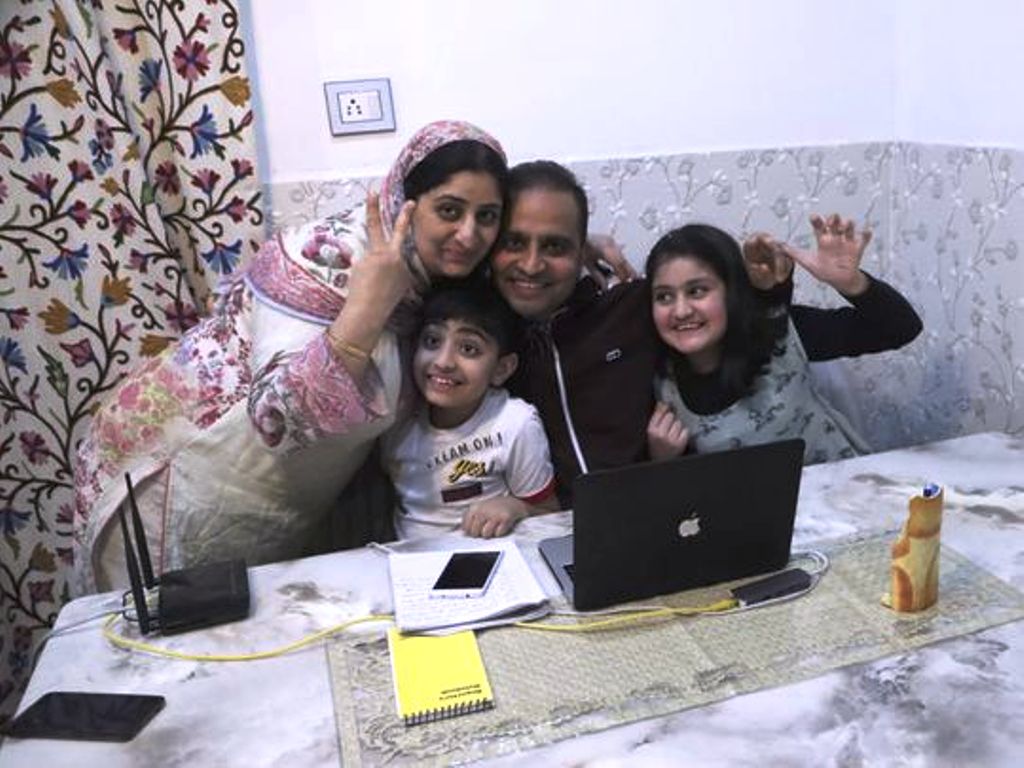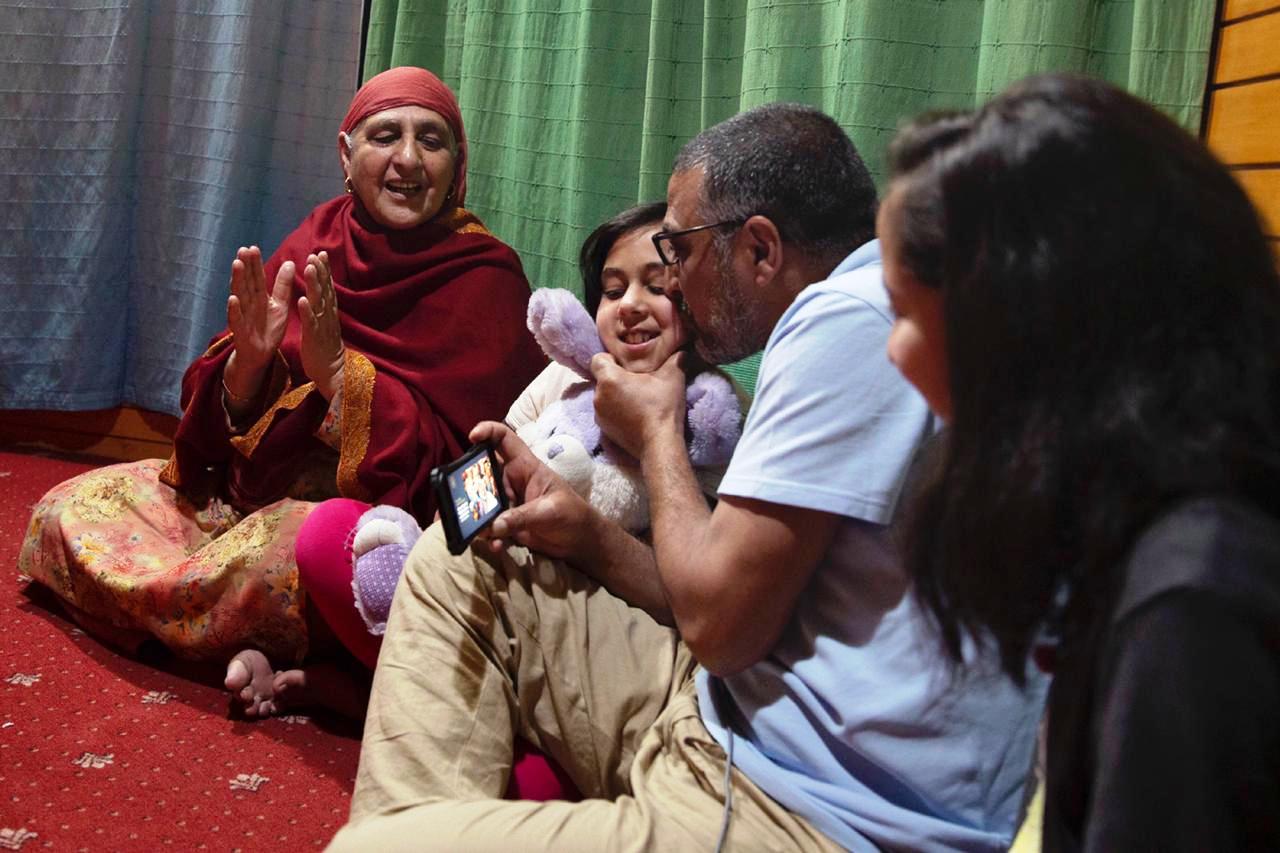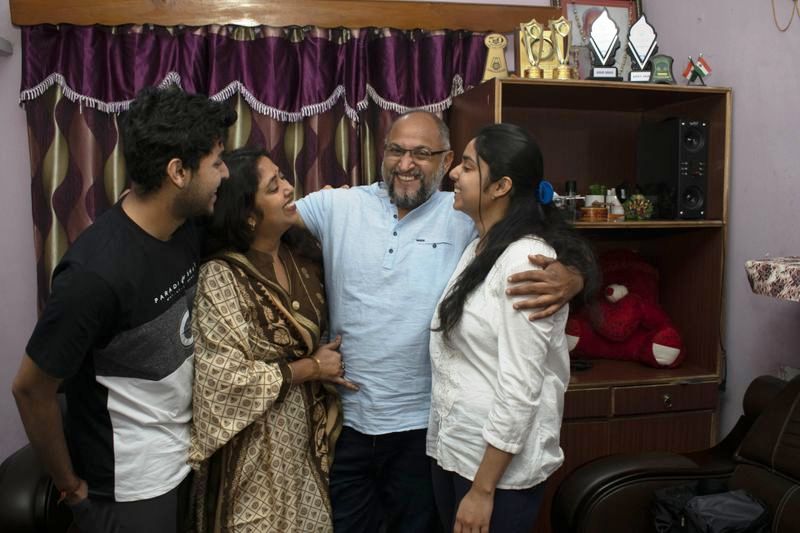SRINAGAR: The Pultizer prize to Associated Press’s the Jammu and Kashmir photographers has been a major development in the history of Kashmir media. The sweet surprise came at the peak of a Coronavirus pandemic and days after the security set-up in Kashmir started harassing the journalists.

Within hours after the awards were announced, the right-wingers gave it a different twist, making it controversial. This, possibly, could have been a factor for most of the media outlets avoiding commenting on the rear fiat. However, there were some media houses that decided to go against the tide and comment on the landmark development.
Hidden picture: Pulitzer Prize For 3 Indian Photojournalists Calls for Celebration
Taken together, these photographs challenge the official — burnished — narrative of normalcy in the region that the Centre would like India and the world to believe in
The Telegraph, Kolkata
May 8, 2020
What makes photography peculiar and powerful among the visual arts is its ability to freeze moments of time for posterity. A photograph is not merely a register of artistic sensibilities; an undoctored image can also be a powerful weapon of documentation. The news of this year’s Pulitzer Prize for Feature Photography being awarded to three Indian photojournalists for their works in restive Kashmir must be seen as a reaffirmation of photography’s potential to portray the reality on the ground. Some of the striking images that have won Dar Yasin, Mukhtar Khan and Channi Anand this rare honour — many of the pictures were taken during the clampdown that followed the revocation of Kashmir’s special status and statehood — offer glimpses of grim truths. The theme that seems to cut across the diverse settings in the photographs is that of a sullen, besieged people. Taken together, these photographs challenge the official — burnished — narrative of normalcy in the region that the

Centre would like India and the world to believe in. The global recognition is also a testimony to the stupendous potential and accomplishments of journalism. The restrictions on mobility and technology imposed by the administration — high-speed internet services are yet to be restored — as well as institutional intimidation had made it especially difficult for scribes to collect and transmit stories. That a handful of journalists remained true to their profession by choosing to retain their autonomy is heartening at a time when large segments of the Indian media are more than eager to march to the tune of the powers that be. Mr Yasin and his colleagues have set an inspiring example that should be emulated by members of the journalistic tribe in an age where authenticity has become a casualty of the post-truth ethic.
Congratulations to Indian photojournalists Dar Yasin, Mukhtar Khan and Channi Anand for winning a Pulitzer Prize for their powerful images of life in Jammu & Kashmir. You make us all proud. #Pulitzer https://t.co/A6Z4sOSyN4
— Rahul Gandhi (@RahulGandhi) May 5, 2020
Three photojournalists winning the Pulitzer Prize should have been an occasion of celebration. But this is New India. The ruling Bharatiya Janata Party, unhappy with the text of the original announcement, has decreed that those in favour of recognizing this achievement are ‘anti-national’ elements. The shrill condemnation is understandable. The spin that had been given to the narrative on Kashmir has been threatened by this collection of searing images. Vilification is propaganda’s way of getting back at emissaries of inconvenient truths. But photography, unlike politics, abhors falsity.
A Thousand Words
Pulitzer-prize winning photographs frame the truth, and the tragedy, of conflict in J&K
The Indian Express, Delhi
May 7, 2020
The five Indian photographers who won the Pulitzer prize for their work both broke news and presented the grim realities of the times we live in.
In every story, there are facts and sometimes, there is the truth. The five Indian photographers who won the Pulitzer prize for their work both broke news and presented the grim realities of the times we live in. Channi Anand, Dar Yasin and Mukhtar Khan from the news wire service Associated Press (AP) were recognised in the feature photography category for their images that captured the humanity, brutality and even the terrible beauty of the suffering in Jammu and Kashmir after the abrogation of Article 370. In addition, Anushree Fadnavis and Adnan Abidi were awarded in the breaking news photography category for their work covering the Hong Kong pro-democracy protests.
Dear @RahulGandhi ji
You congratulated Mr Dar who received the Pulitzer award today for photography.
One of the photographs is enclosed herewith
The caption mentions “Indian Occupied Kashmir”
Mr Rahul is Kashmir an integral part of India??
Answer#AntiNationalRahulGandhi pic.twitter.com/g5t3Jo2q6D— Sambit Patra (@sambitswaraj) May 5, 2020
J&K and Hong Kong are different from one another, but in both, voices in a small pocket of a large, powerful nation-state are attempting to make themselves heard. Yasin’s image of a protestor in the Valley, trying to mount an armoured vehicle with a stone in hand, says more about anger, humanity, politics and tragedy than words ever could.
And for all the images of violence, Khan’s photograph of Indian forces keeping vigil as Kashmiri citizens pray, holds more hope than all the platitudes of politicians about “one India”. And perhaps the most powerful of all, the hurt, almost deadpan expression on the face of six-year-old Muneefa Nazir, whose right eye was injured by a marble ball, allegedly from firing by Indian forces.
The images certainly present more than facts. They reveal something of what it means to be human beings under siege, of what living in the shadow of violence looks and even feels like. And most of all, without the words and cliches that are used to talk about conflict, they have the power to evoke an honest reckoning.
Honour for Kashmir Journalism
Kashmir Observer, Srinagar
May 5, 2020
PULITZER prize for feature photography for three J&K photo-journalists is a recognition of the merit of Kashmir journalism by the world. It has put Kashmir journalism on a global map. Three recipients Dar Yasin, Mukhtar Khan and Channi Anand deserved the honour for their great images that reflected the situation in the Kashmir valley during the lockdown following the revocation of Article 370 in August last. Kashmir was under security blockade and communication blackout during the period. But despite that Kashmiri journalists were out on the streets discharging their professional duty. They covered the extraordinary situation for the world at great personal risk.
It’s been a difficult year for journalists in Kashmir & that’s saying something considering the last 30 years haven’t exactly been easy. Congratulations to @daryasin, @muukhtark_khan & @channiap on this prestigious award. More power to your cameras. https://t.co/A7SH5hUEGZ
— Omar Abdullah (@OmarAbdullah) May 5, 2020
Photographers through their images gave the world a feel of what was happening on the ground. Among them were three Pulitzer recipients who continued their work undaunted by the impossible situation. The Kashmir they captured is unfiltered and unmediated by the words or a fleeting video and their implicit and explicit politics. People got to see and experience the situation in Kashmir like it is, not how it has to be seen and experienced. They confronted the state’s narrative with its biggest challenge. They took the viewer into the lanes and bylanes of Srinagar and further afield into the countryside, its mofussil villages, orchards and fields, into the homes and kitchens of the people, all under lockdown.
Like others the awardees had no means to send their images to their offices, so they would go to Srinagar airport and plead with flyers to carry their memory cards and flash drivers to New Delhi. Clicking the pictures or covering a story was also a big ordeal. It required getting past roadblocks and security checks. But journalists in Kashmir broke all the barriers to tell the story, using keyboards and cameras. Pictures were an unmediated reflection of the situation in Kashmir. It is their directness and raw quality that made the world notice the extent of crackdown in Kashmir. And now with the Pulitzer board honouring the three J&K photo-journalists, it is the recognition of not only the coverage of the lockdown but the decades of the toil of reporting Kashmir. Despite the unhelpful environment, Kashmiri journalists have produced an impressive body of work and in turn a historical record of the past three decades. So, Pulitzer for Yasin, Mukhtar and Anand is an occasion to savour and celebrate. And it is also an occasion to renew our commitment to the highest standards of journalism.
Politicizing Pulitzer
Kashmir Images, Srinagar
May 6, 2020
Three photojournalists from Jammu and Kashmir have been awarded the 2020 Pulitzer Prize for their “striking images of life” in the valley. Channi Anand, Mukhtar Khan and Dar Yasin of the Associated Press won in the feature photography category. The news has thrilled the journalists in Jammu and Kashmir who see the award as a recognition of hard work and dedication of the journalists working in J&K. Right from the early 90’s, the media has been one of the most challenging professions in J&K, particularly in Kashmir. Nearly 20 journalists were killed; scores were abducted, arrested and tortured; scores were beaten and thrashed while performing their professional duties; newspaper offices were bombed; newspaper publications were banned so on and so forth. Despite all these odds and threats, the journalists in Kashmir continued working. They would always be target of the wrath of the state as well as non-state forces as both wanted them to look at the situation, report and click it the way they wanted. However, the journalists stood the ground. They braved all the challenges and did their best not to compromise the ethics and basic principles of journalism. That is why the Pulitzer to Channi Anand, Mukhtar Khan and Dar Yasin has been celebrated by the local media.
Congratulations @daryasin @muukhtark_khan for your exemplary photography capturing the humanitarian crisis in Kashmir post illegal abrogation of Article 370. Bizarre that our journalists win accolades abroad but are punished under draconian laws on home turf https://t.co/FEliDToHkN
— Mehbooba Mufti (@MehboobaMufti) May 5, 2020
It is not only the media, the people from all walks of life have congratulated these three photojournalists for their achievement. However, it is unfortunate that some leaders of the ruling BJP have tried to politicize the even because they have to score some political points over rival Congress. BJP’s Sambit Patra has a problem with the award because in citation Jammu and Kashmir has been referred to as “contested territory” so, as per Patra’s wisdom, the award is challenging the Indian stance of J&K being ‘an integral part of India.’

Someone should have told the learned politician that the three photojournalists of J&K had submitted their work for consideration of the award. They are not the ones who drafted the citation. There work was so great that they stood tall in the entire world. Instead of hailing them, patting them on the back, spokesman of a party, that rules a mighty nation like India, tries to demonize the awardees. Posting the “citation”, he said, “The citation of the Pulitzer award to the three so-called Indian journalists: Why did these journalists accept this award … An award is important or the sovereignty of your Nation is?” One feels sorry for a seasoned politician who raises such naïve questions to target his award-winning countrymen. One may ask him humbly if by accepting an award with such a citation is challenging nation’s sovereignty, why do India attend all UN meetings? Doesn’t the UN believe and repeatedly say that Jammu and Kashmir is a dispute?















